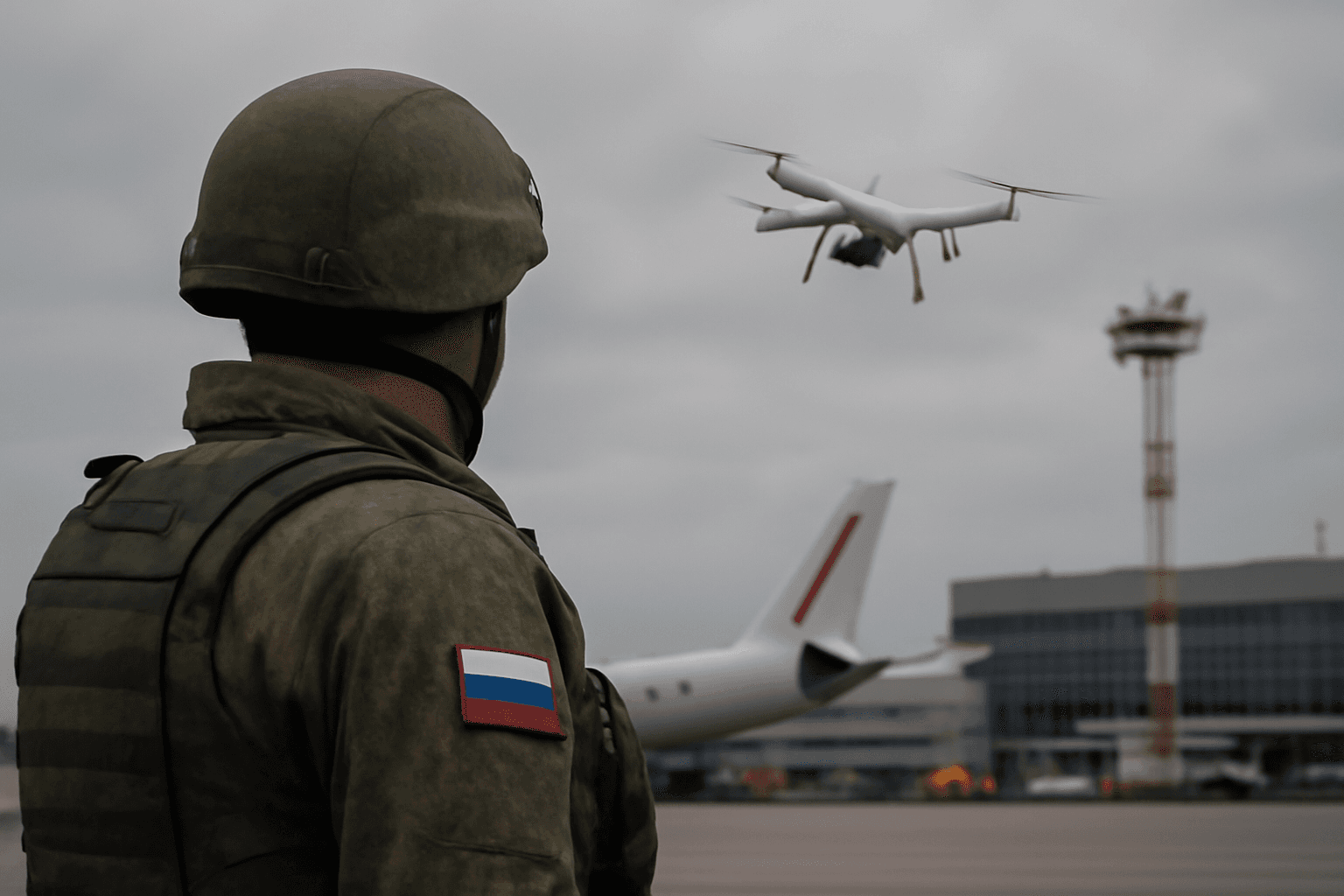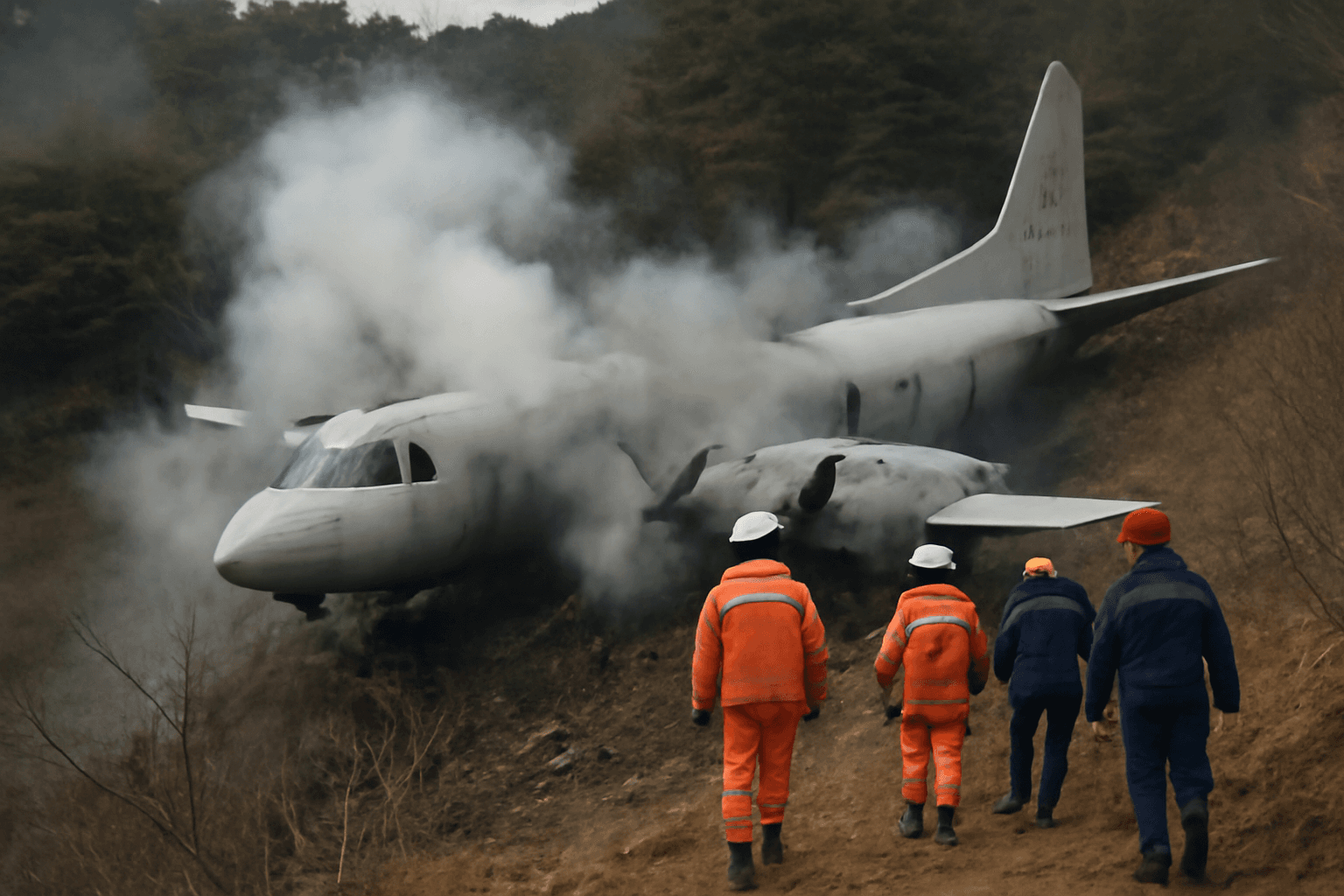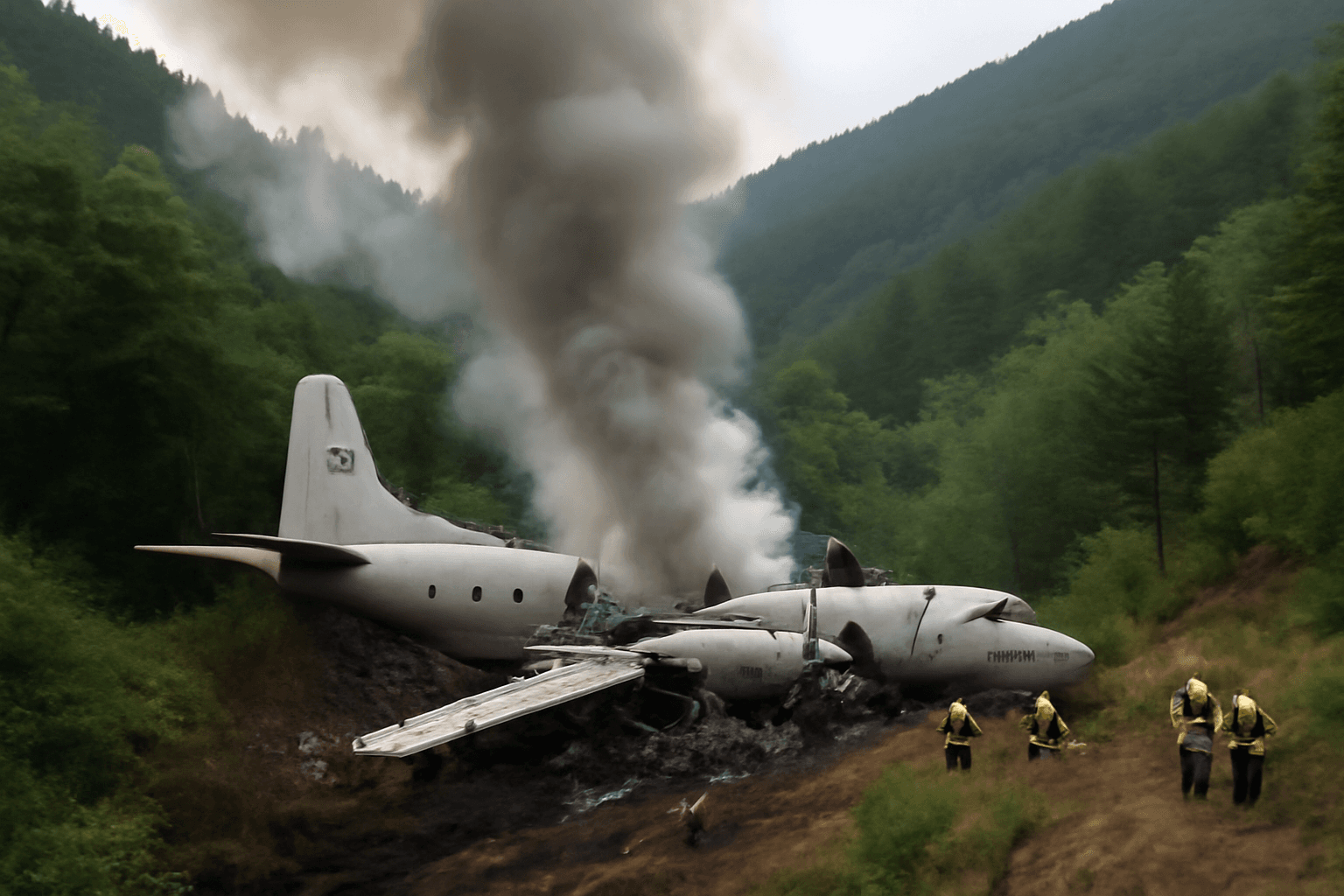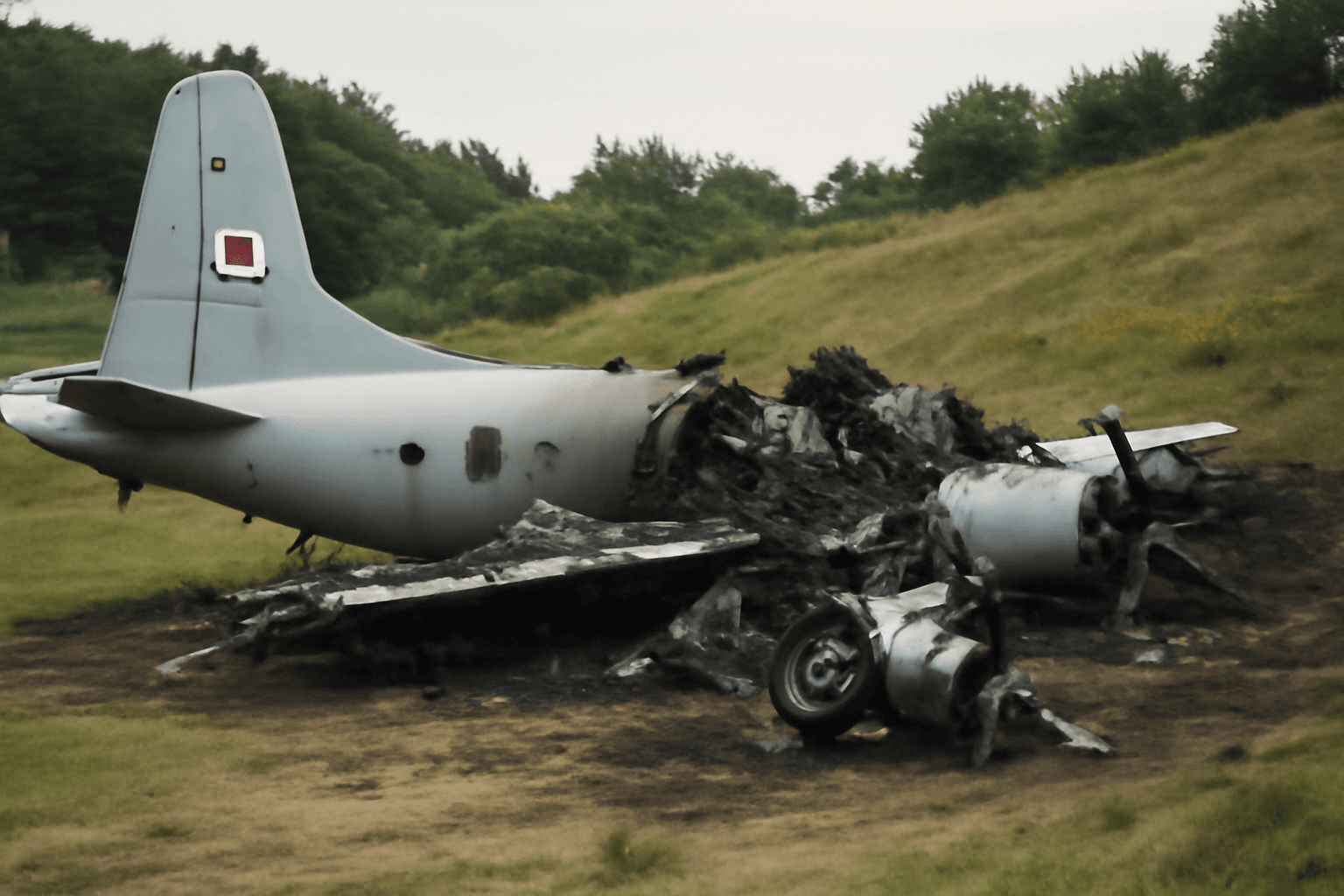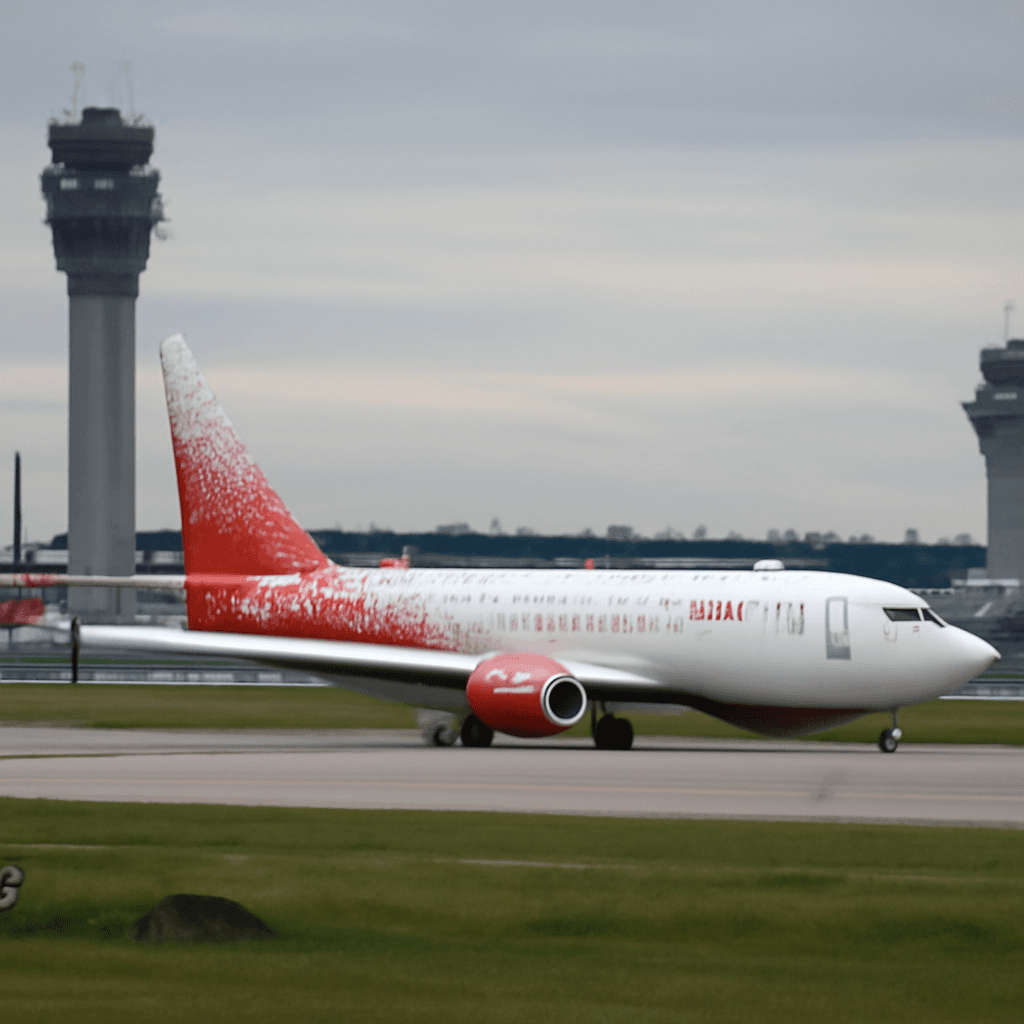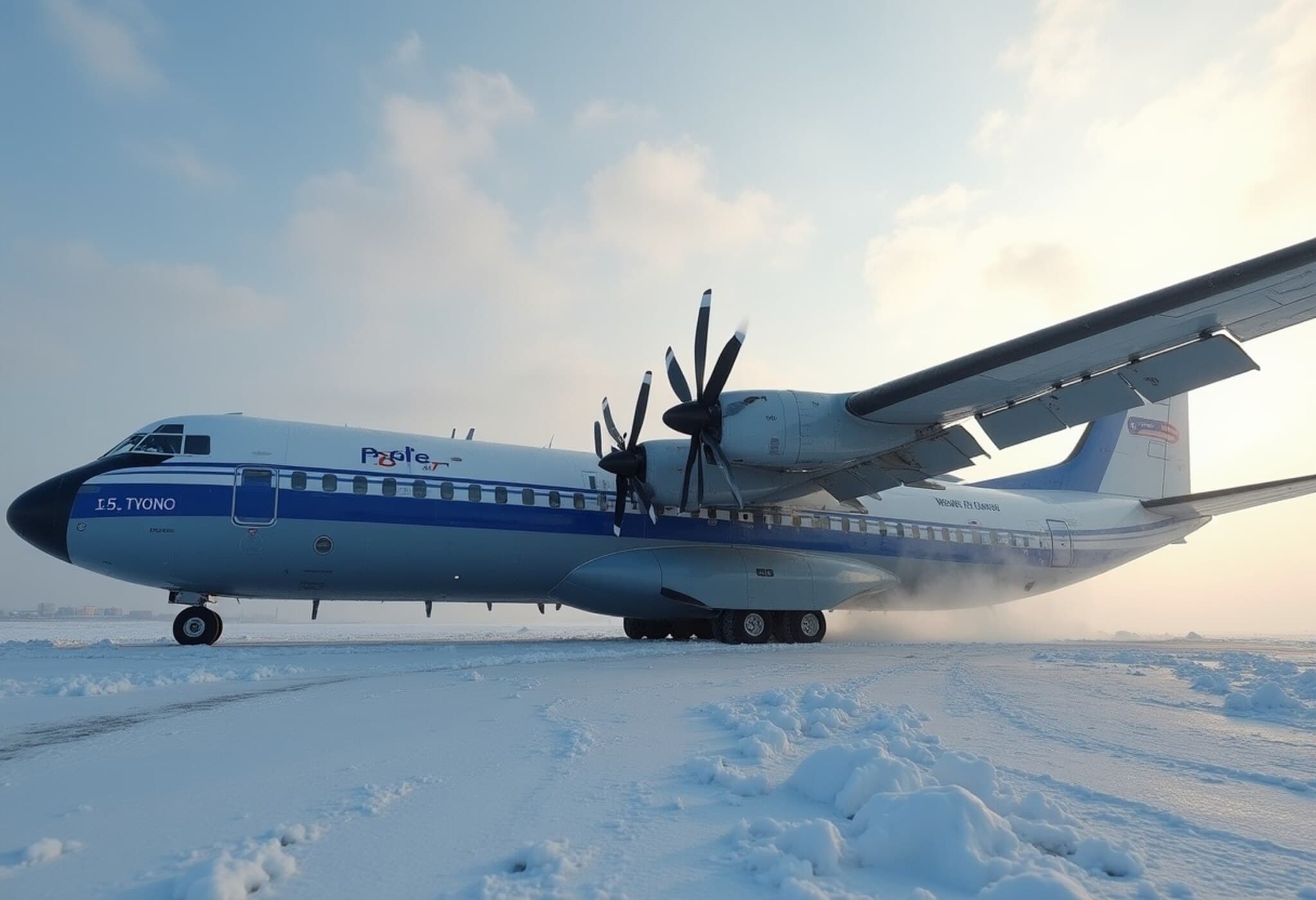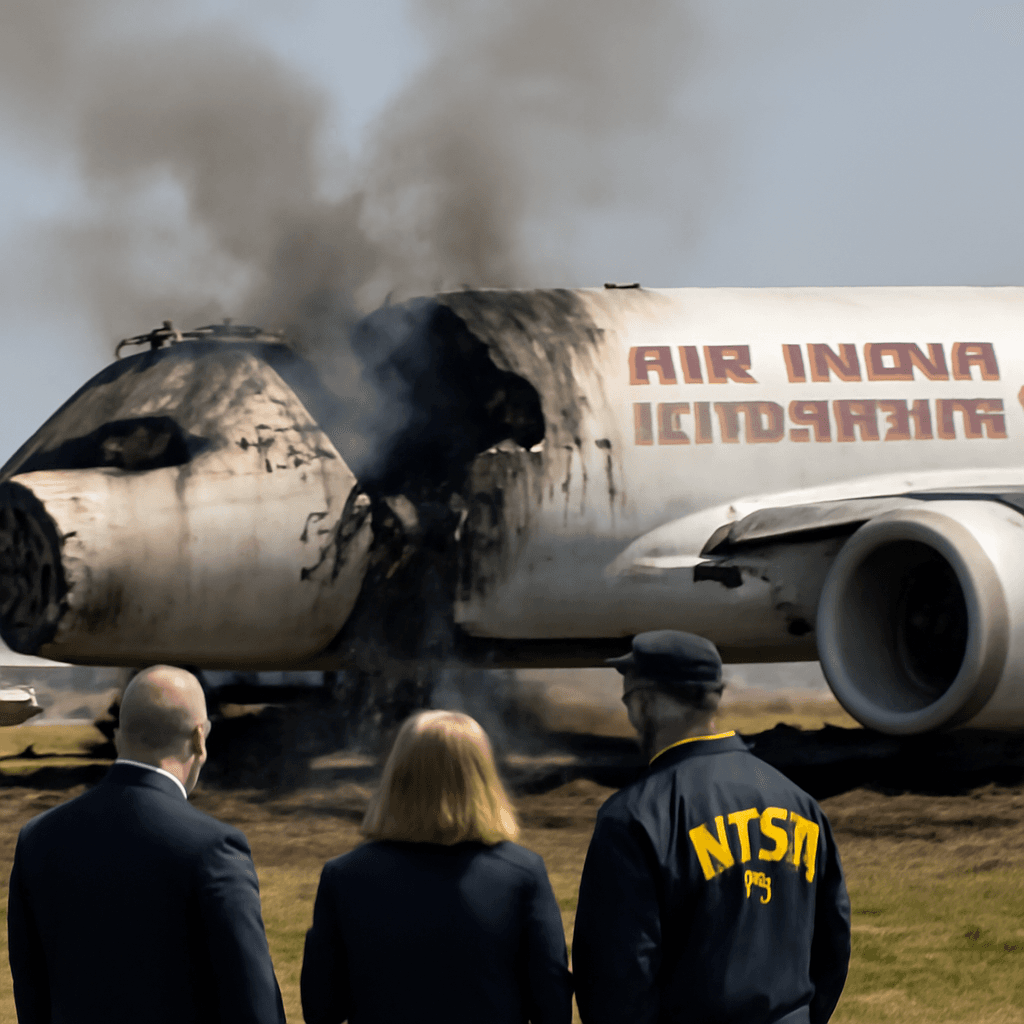Russian Plane Disappears from Radar Near Tynda, Amur Region
In a distressing incident on July 24, 2025, a Russian passenger aircraft operated by Angara Airlines vanished from radar just minutes before landing in Tynda, located in Russia's remote Amur region bordering China. The plane was carrying approximately 49 people, including passengers and crew, when contact was abruptly lost, triggering a large-scale search operation.
Details of the Incident and Initial Findings
The aircraft, an Antonov An-24, was nearing the Tynda airport when air traffic controllers lost communication with the flight. According to Russian news agency TASS, the plane failed to check in at a designated air traffic point only a few kilometers from its destination. Eyewitnesses and sources have reported seeing a burning fuselage in the vicinity, with rescue helicopters mobilized rapidly to the crash site.
Regional governor Vasily Orlov confirmed the grim scene, stating that the plane was carrying 43 passengers, among them five children, and six crew members. However, the Ministry of Emergency Situations cited a slightly different number, estimating the total on board to be around 40 individuals. This discrepancy highlights the initial chaos common in such tragic events.
The Search and Rescue Efforts in Challenging Terrain
Given the region's vast and rugged landscape, the search efforts have been complex and urgent. Emergency services have deployed all available resources, including helicopters and ground teams, to locate survivors and secure the crash site.
- Geographical Challenges: The Amur region's dense forests and proximity to the Chinese border complicate rescue operations.
- Weather Conditions: Early reports indicate weather may have played a role, although details remain unconfirmed.
- Technical Failures: Aviation experts suggest multiple possibilities, including mechanical failure or navigational errors, given the plane's disappearance so close to the airport.
Broader Implications for Russian Aviation Safety
This catastrophic event once again spotlights safety concerns associated with regional Russian airlines, especially those operating Soviet-era aircraft like the An-24. Angara Airlines, based in Siberia, is among several carriers relying on aging fleets to serve remote areas with limited infrastructure.
Experts warn that this accident underscores the urgent need for modernization and stricter oversight within Russia's domestic aviation sector. The asymmetry between expansive territory, harsh environments, and aging aircraft introduces significant operational risks. Prompt investigations and policy reassessments will be essential to prevent future tragedies.
Human Impact and Emotional Toll
Beyond technical details lies the heartbreak of families anxiously awaiting news. With children reportedly among the passengers, the emotional weight resonates deeply within the local communities and across the nation. This tragedy evokes memories of past Russian air disasters, reminding us of the fragility of life and the critical importance of aviation safety protocols.
What Comes Next?
A thorough investigation by aviation authorities is underway, aiming to piece together the sequence of events leading to the crash. Meanwhile, rescue teams continue their search, hoping for survivors while preparing to bring closure to families. The incident is a stark reminder of the high stakes of air travel in remote regions where infrastructure and technology face constant tests.
Editor's Note
This tragic loss raises urgent questions about the safety of regional air travel in Russia's vast eastern territories where harsh conditions and aging fleets converge. How can aviation regulators accelerate modernization to protect remote populations? What lessons can be drawn from this event to enhance crisis response amid challenging environments? As investigations develop, it is crucial to balance empathy for those affected with a sober assessment of systemic vulnerabilities. Our thoughts are with the families.


